Background
The Institute for Science and International Security has reviewed open-source images and information found on the internet, identifying several key Western parts, commonly available on the commercial market, used in the Russian Lancet-3 kamikaze drone.
The Lancet-3 is an effective combat drone that has been successful in combat operations against Ukrainian systems, including Western supplied armor and artillery.
This report follows a series of reports published in the last year by the Institute on Russian drone systems and its acquisition of foreign technology.
Russia is increasingly relying on large quantities of unmanned aerial vehicles (UAVs) to identify, target, and attack Ukrainian positions, vehicles, and structures.
Russia has a limited capability to design and produce advanced strategic commodities. To build these UAVs, Russia depends on extensive procurement networks to acquire strategic commodities produced by foreign countries, particularly the United States.
Because of the use of civilian Western components in Russian military systems, the United States and its partners are intensifying controls on critical items used in Russian drones, but more needs to be done.
Key Findings and Recommendations
The Russian Lancet-3 drone, produced by ZALA-Aero Group, contains key parts produced by Western firms.
Parts from companies based primarily in the United States, Switzerland, and Czech Republic, were identified (see Table 1 below). This table is not exhaustive and is only based on the available open-source information the Institute could identify.
The Western components allow the Lancet-3 drone to have advanced targeting capabilities it would not have otherwise.
The foreign components enable Russian drones to defeat Ukraine's defense systems more effectively.
The drone's power source was identified by the Institute in the materials reviewed as the only component made by a Russian company. However, ZALA-Aero claims to be the producer of the airframe and the camera.
Western products found in the drone include analytical modules, the engine, and parts used in communication components, telemetry, and guidance.
The Lancet-3 has AI analytical and image processing capabilities powered by a Jetson module, produced by the American company NVIDIA and utilizing NVIDIA software, which enables the drone system to autonomously seek and track specific objects alone or in groups. The drone system is also equipped with a U-Blox guidance and navigation module that contains advanced anti-jamming and anti-spoofing capabilities that have been effective at defeating Ukrainian electronic warfare measures.
Several of the Western products have been found in other drone systems operated by the Russian military. Swiss U-Blox GPS systems that have advanced anti-jamming and anti-spoofing capabilities have been found in the Orlan-10 and the Shahed-136. American NVIDIA AI development modules used as an internal analytical system have been sought after by Albatross LLC for use in its Albatross M5 reconnaissance drone. The recurring appearance of these Western products in Russian drone systems shows a keen dependence on them for key capabilities in the drone systems.
The use of parts produced by Western firms follows a trend in Russian drone systems, which are highly dependent on foreign acquisition to operate as intended. This has required a range of actions to try to thwart the acquisition of those commodities, which have rarely received export control or sanctions attention in the past.
Manufacturers of the identified components need to control and limit the sale of the specific items identified more tightly.
Manufacturers should require their distributors to increase end-use and end user checks, and if necessary, reduce or temporarily cease the use of distributors altogether for certain key items, and stop exports to high-risk diversion countries, primarily China, altogether for certain key items.
The U.S. government should swiftly sanction more known Russian producers of military combat drones. A major drone producer that has yet to be sanctioned despite it supplying Shahed-136 drones to the Russian military, with the goal to have supplied 6000 by September 2025, is JSC Alabuga, which should be sanctioned along with its related companies Alabuga Development Company, Alabuga Machinery, Alabuga ExIm, and individuals with senior roles in the drone production.
Introduction
The Institute for Science and International Security has analyzed open-source information on downed, recovered, and deconstructed Russian Lancet-3 drones, identifying numerous Western parts and components.[1] This report follows a series of reports issued by the Institute analyzing Russian and Iranian drones used against Ukraine, identifying a common trend that these drone systems depend on electronics exclusively produced by firms in Western countries, particularly the United States.[2]
The Russian Lancet-3, produced by the Russian firm ZALA-Aero Group, a subsidiary of Kalashnikov Concern, is an unmanned aerial vehicle that operates as a loitering munition that remotely targets and conducts attacks in a kamikaze style.[3] ZALA-Aero Group is sanctioned by the United States.[4] The open-source materials analyzed by the Institute contain images of downed, destroyed, captured, and deconstructed Lancet-3 drones.[5] The images indicate that Russia is dependent on foreign origin goods for its Lancet-3 drone system, such as the motor, image processing and analytical components, and microchip sub-components used to produce a larger component. Parts from primarily the United States, but also Switzerland, and Czech Republic, were identified (see Table 1).
The Lancet-3 Loitering Munition
The Lancet-3's airframe and distinctive dual X-wing shape (see Figure 1) are built from composite materials enabling it to have a lightweight design. The drone is stored in a case that can be carried onto the battlefield, where the drone can be unfolded at the designated launch point. A crew of two trained soldiers operate the system. The drone is then launched via a catapult system and is controlled by a ground operator (see Figure 2 and 3). The drone can be communicated with using an antenna or a mobile ground station.[6] A camera at the front of the drone is used for visual identification of targets and guidance in the attack. According to ZALA-Aero Group, the Lancet-3 has a purported range of roughly 40 kilometers (km) and has an advertised maximum speed of 80-110 km/hour.[7] The drone is powered by an electric motor. The drone system carries a warhead towards the front of the UAV weighing 1-3 kg.
The drone system has made a dramatic impact on the battlefield and has successfully targeted and destroyed or damaged a multitude of combat systems operated by the Ukrainian armed forces, including Western supplied armored vehicles and artillery. The Lancet-3 reportedly has the ability to identify and attack targets autonomously in groups with the help of AI processing modules embedded in the drone system. [8] Ukrainian officials further observed that Lancet drone strikes occur when Russian reconnaissance UAVs are conducting operations, indicating that they operate in conjunction. [9] Once the drone system has identified a target, it locks on to the target and explodes at a designated distance from the target using a rangefinder, enabling it to defeat anti-drone protection cages, which often confuse the impact fuses on other drone systems. [10] Prior to the war in Ukraine, the Lancet had been tested in the combat theater of Syria against Turkish forces.[11]
Newer versions of the drone, purportedly called "Product 53" or the "Izdeliye-53," can be launched from a four pneumatic tube launching system, which enables multiple next generation Lancet drones to be launched in short succession (see Figure 4).[12] According to the Institute for the Study of War, the Russian government claims that the new Izdeliye-53 had been used in combat missions in Ukraine, although no evidence of actual use has been found. [13] Images of the Izdeliye-53 show that it is very similar in design to the Israeli Hero-120 loitering munition, produced by UVision. [14]
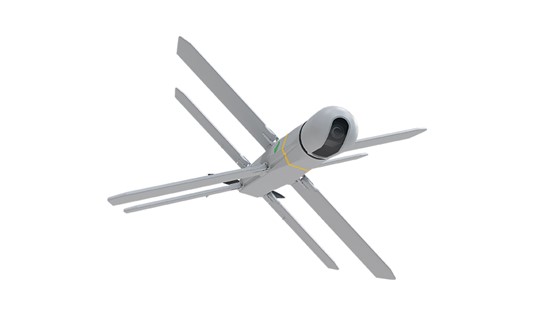
Figure 1. An image of the Lancet-3 drone taken from the ZALA Aero-Group website. [15]
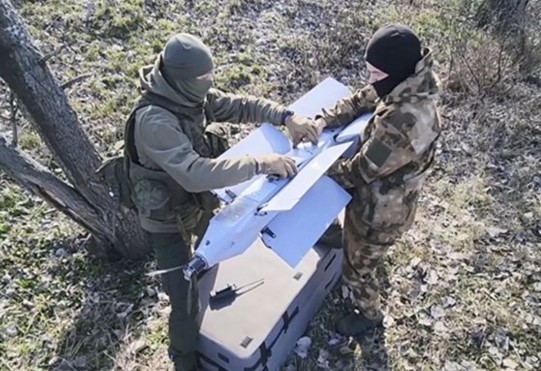
Figure 2. The Lancet-3 drone being taken and deployed from its carrying case, in this image published by Russian media. [16]
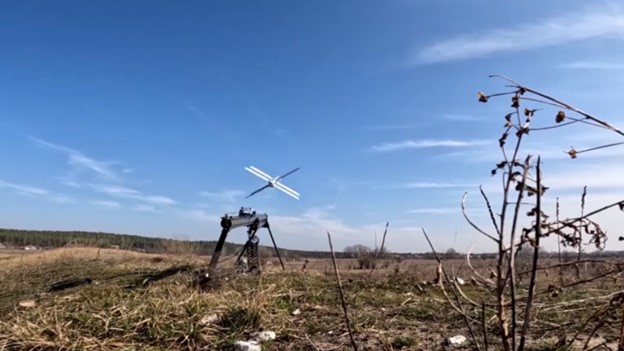
Figure 3. A Lancet-3 drone being launched from a catapult. [17]
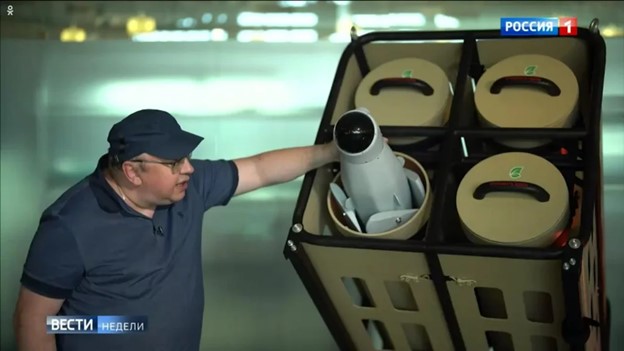
Figure 4. The four-tube launcher used to deploy the next generation Lancet drone, the Izdeliye-53.
Western Dependency
Open-source images and information of downed, captured, or destroyed Lancet-3 drones, some of which are published by the Ukrainian Main Directorate of Intelligence and private individuals, show an extensive dependence on Western and allied foreign commercially available parts for critical components of its drone system. Very few of the components identified in open-source information were Russian origin commodities. Table 1 below contains the overall component, the sub-components identified, the sub-component description, the producer, and the country where the manufacturer is based. These findings follow a trend in the design of Russian drone systems. Previous Institute reports on the Russian Orlan-10 reconnaissance UAV and the Russian/Iranian Shahed-136 kamikaze drone show a dependance on Western commodities, particularly U.S. electronic sub-components used in various electronic modules, such as navigation, flight control, and anti-jamming and spoofing modules. Several of the identified parts are sold through third-party distributors and resellers, and were found available for purchase on Alibaba.com, a Chinese online wholesaler, which performs poor due vigilance of its customers.
Based on the available information, the Lancet does not appear to have a dedicated module devoted to defeating jamming or spoofing, such as the Iranian designed Nasir module in the Shahed 136.[18] However, the Lancet contains a GPS unit manufactured by U-Blox that does have intrinsic anti-jamming and anti-spoofing capabilities, allowing it to continue receiving satellite signals despite enemy jamming or spoofing systems. Future versions of the Lancet may include dedicated anti-jamming equipment; however, these systems will likely also depend on Western electronic components.
The only Russian component identified in the available images is the power source, utilizing lithium-ion polymer (LiPo) batteries produced by AccumStation.[19] Further, on ZALA-Aero Group's website, ZALA-Aero claims to produce the carbon fiber fabric composite airframe and the camera at the head of the drone.
Lancet-3 Engine. Available imagery of an engine found in the Lancet-3 shows that it is an electric motor produced by the Czech Republic based company, AXI Model Motors. The motor appears to be a brushless AXI 5330 Gold Line electric motor, commonly used by model airplane hobbyists.[20] Russia has made a concerted effort to disguise the use of this motor and in some available images, the AXI logo is taped over.[21] The producer of the engine claimed that sale of the engine to Russia had ceased in 2022 and that the identified engine likely came from a third-party supplier.
Lancet-3 Navigation System. An assessment on the Lancet-3 navigation systems, conducted by Ukrainian Main Directorate of Intelligence, found the use of a U-Blox navigation module compatible with GPS (American), Galileo (European), GLONASS (Russian), and BeiDou (Chinese) satellite systems, equipped with anti-jamming and anti-spoofing capabilities. [22] U-Blox navigation products have been identified in other Russian and Iranian drone systems, such as the Orlan-10 and the Shahed-136.
Lancet-3 AI Capabilities and Target Acquisition. The Lancet-3 is purported to have AI (artificial intelligence) capabilities that enable advanced image and data processing for target acquisition. A deconstruction of a Lancet drone found that it is equipped with the Jetson TX2, an advanced and compact AI development module produced by the American company NVIDIA and utilizing NVIDIA software. [23] These modules have large processing and AI capabilities and are sought after for their advanced and efficient design. Russian designers can program such NVIDIA modules to enable a drone system to better identify potential targets, relay that information to a ground operator, and facilitate an accurate strike.
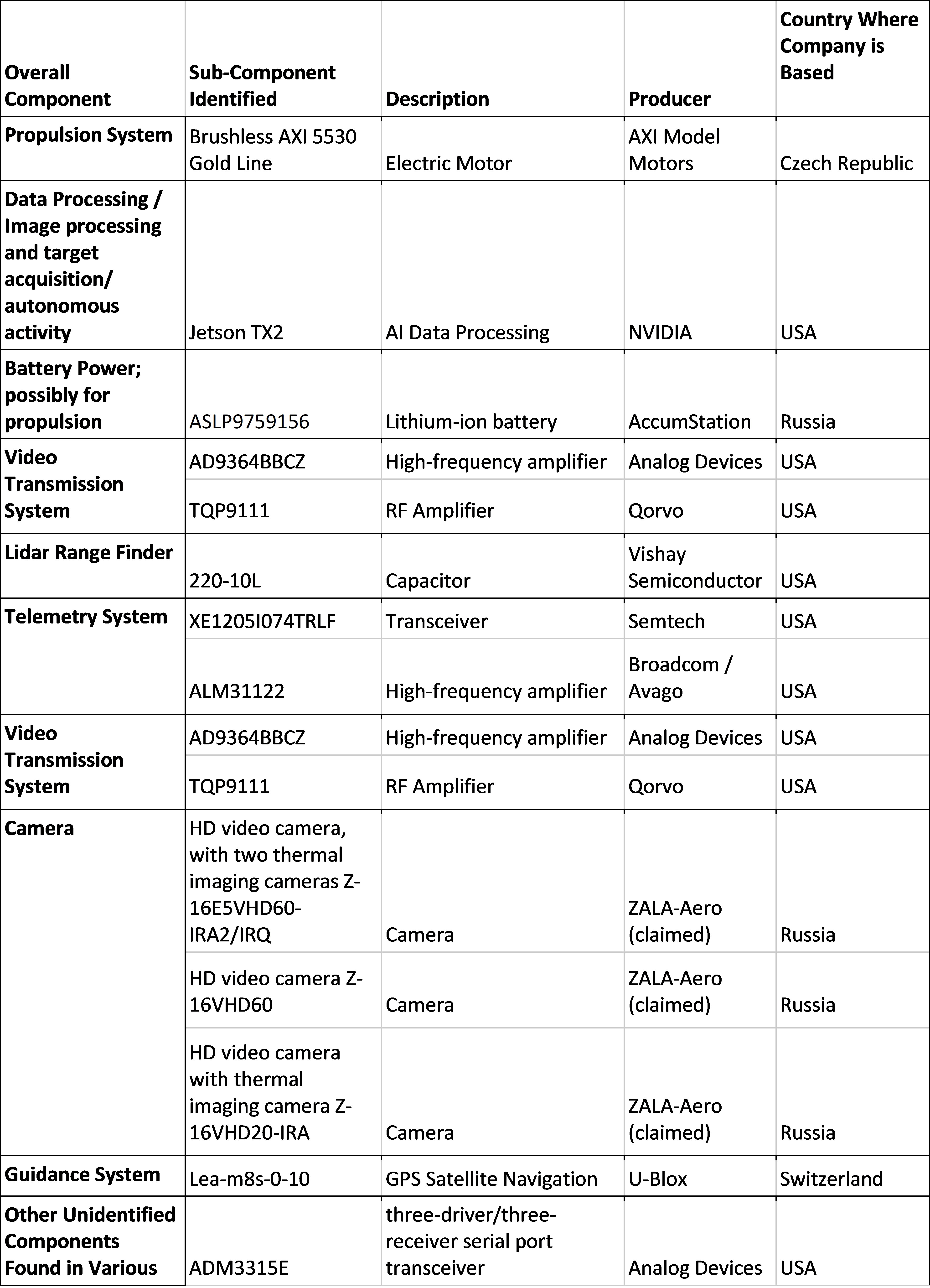
Table 1. The components and several subcomponents for the Lancet-3 identified in open-source materials reviewed by the Institute.
Recommendations, Pressure Points, and Sanctions Enforcement
The identified components produced by Western firms expose a supply chain vulnerability, similar to the vulnerabilities identified in the supply chains for the Orlan-10 and the Shahed-136. Some of the components may be exclusively manufactured by companies based in Western countries and this enables them to form a choke point. For example, the NVIDIA modules are sought after commodities for their AI applications and advanced processing capabilities, highly useful for autonomous target acquisition.
While it is a positive development that ZALA-Aero Group is now a sanctioned entity, other Russian producers of drones are not, such as the JSC Alabuga company and its associated companies such as Alabuga Development Company, which produce the Iranian Shahed-136 (also known as the Geran-2). Albatross LLC, which also utilizes an NVIDIA Jetson module, produces the M5 drone at the Alabuga SEZ. [24] Albatross LLC has been sanctioned, but this action should be viewed as the first step towards sanctioning the entire drone production complex Russia has established at Alabuga.[25]
Further, it is crucial for the Western manufacturers listed above, and other manufactures identified in earlier reports, by media, and governments, to expand their vigilance and due diligence of the end users of the identified products, which necessarily requires them to demand their distributors and shippers apply greater caution about end users. Too many producers of goods identified as used in Russian and Iranian drone systems remain lackadaisical about their products after delivering them to distributors and third-party resellers, which in turn rarely exercise sufficient due diligence to ensure that these goods do not end up in a drone used against Ukraine.
In addition, Western companies should exercise voluntary constraints. They should simplify their supply chains and distribution networks. As stated in previous Institute reports, major suppliers should stop using distributors to sell critical parts. Instead, the company and its subsidiaries should sell them directly, which would allow for centralized internal compliance systems to catch suspicious inquiries and for more thorough checks of declared end-uses and end users. [26] In addition, certain critical Western parts should not be exported to China, since it is unwilling to implement controls on the onward export of Western electronic and other goods known to be used in Russian military drones.
1. "Russian Kamikaze Drone "Lancet" Equipped With NVIDIA Jetson TX2 Computer And Xilinx Zynq Chip," SunDries, March 20, 2023, https://sundries.ua/en/russian-kamikaze-drone-lancet-equipped-with-nvidia-jetson-tx2-computer-and-xilinx-zynq-chip/. [↩]
2. David Albright and Sarah Burkhard, "Electronics in the Shahed-136 Kamikaze Drone," Institute for Science and International Security, November 14, 2023, https://isis-online.org/isis-reports/detail/electronics-in-the-shahed-136-kamikaze-drone; David Albright and Sarah Burkhard, "Iranian Drones in Ukraine Contain Western Brand Components," Institute for Science and International Security, October 31, 2022, https://isis-online.org/isis-reports/detail/iranian-drones-in-ukraine-contain-western-brand-components; Spencer Faragasso, "Russian Military UAV Used in Ukraine Depends on Foreign Parts," Institute for Science and International Security, May 11, 2022, https://isis-online.org/isis-reports/mobile/russian-military-uav-used-in-ukraine-depends-on-foreign-parts. [↩]
3. "Zala Aero: About," Zala Aero Group, December 2023, https://zala-aero.com/en/about/. [↩]
4. Office of the Spokesperson, "Taking Additional Sweeping Measures Against Russia," United States Department of State, November 2, 2023, https://www.state.gov/taking-additional-sweeping-measures-against-russia/. [↩]
5. "The Ukrainian military showed the "stuffing" of the Russian Lancet UAV - it has American components." Telegram Channel: ZN.UA, March 19, 2023, https://t.me/znua_live/85302. [↩]
6. "Mobile Stations," Zala Aero Group, December 2023, https://zala-aero.com/en/production/mobile-stations/; "Antennas," Zala Aero Group, December 2023, https://zala-aero.com/en/production/additional_equipment/antennas/[↩]
7. "Lancet-3," Zala Aero Group, December 2023, https://zala-aero.com/en/production/bvs/zala-lancet-3/. [↩]
8. David Hambling, "Russia Boosts Production And Displays New 'Swarming' Version Of Lancet-3 Kamikaze Drone," Forbes, July 18, 2023, https://www.forbes.com/sites/davidhambling/2023/07/18/russia-boosts-production-and-displays-new-swarming-version-of-lancet-3-kamikaze-drone/?sh=1d38d9b1aa20. [↩]
9. "METHODOLOGICAL RECOMMENDATIONS 'ON ELECTRONIC COUNTERACTION TO UNMANNED AERIAL VEHICLES 'LANCET,'" MAIN DIRECTORATE OF ELECTRONIC AND CYBER WARFARE OF THE GENERAL STAFF OF THE ARMED FORCES OF UKRAINE, February 2023, https://sprotyvg7.com.ua/wp-content/uploads/2023/03/ЕлектронпротидіяБПЛАG2спр.pdf. [↩]
10. "The Lancet drone has acquired the ability to destroy targets protected by nets," Militarnyi, November 9, 2023, https://mil.in.ua/en/news/the-lancet-drone-has-acquired-the-ability-to-destroy-targets-protected-by-nets/. [↩]






